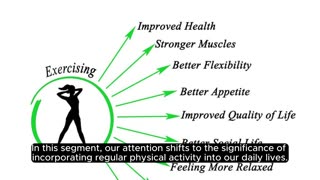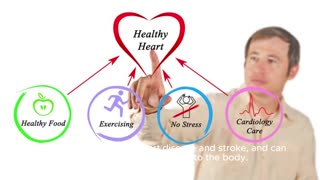Physical activity
Key facts
Physical activity has significant health benefits for hearts, bodies and minds
Physical activity contributes to preventing and managing noncommunicable diseases such as cardiovascular diseases, cancer and diabetes
Physical activity reduces symptoms of depression and anxiety
Physical activity enhances thinking, learning, and judgment skills
Physical activity ensures healthy growth and development in young people
Physical activity improves overall well-being
Globally, 1 in 4 adults do not meet the global recommended levels of physical activity
People who are insufficiently active have a 20% to 30% increased risk of death compared to people who are sufficiently active
More than 80% of the world's adolescent population is insufficiently physically active
WHO defines physical activity as any bodily movement produced by skeletal muscles that requires energy expenditure. Physical activity refers to all movement including during leisure time, for transport to get to and from places, or as part of a person’s work. Both moderate- and vigorous-intensity physical activity improve health.
Popular ways to be active include walking, cycling, wheeling, sports, active recreation and play, and can be done at any level of skill and for enjoyment by everybody.
Regular physical activity is proven to help prevent and manage noncommunicable diseases such as heart disease, stroke, diabetes and several cancers. It also helps prevent hypertension, maintain healthy body weight and can improve mental health, quality of life and well-being.
In a 24-hour day, children 1-2 years of age should:
spend at least 180 minutes in a variety of types of physical activities at any intensity, including moderate- to vigorous-intensity physical activity, spread throughout the day; more is better;
not be restrained for more than 1 hour at a time (e.g., prams/strollers, high chairs, or strapped on a caregiver’s back) or sit for extended periods of time.
For 1 year olds, sedentary screen time (such as watching TV or videos, playing computer games) is not recommended.
For those aged 2 years, sedentary screen time should be no more than 1 hour; less is better.
When sedentary, engaging in reading and storytelling with a caregiver is encouraged; and
have 11-14h of good quality sleep, including naps, with regular sleep and wake-up times.
-
 1:42
1:42
budi3113
5 months agoEmbracing Physical Activity
4 -
 2:51
2:51
tipstips01
5 months agoThe Importance of Physical Activity_ 10 Tips
2 -
 2:12
2:12
Namika
5 months agoExercise for health
9 -
 36:44
36:44
thehealthangle
2 months agoExercise and Movement
91 -
 4:27
4:27
AJHealth
2 months agoThe Golden Key to Health - Physical Activity for Older Adults
19 -
 0:46
0:46
Moon124
3 months agoFitness
5 -
 0:19
0:19
Certified Wholistic Health Coach
1 month agoWhat do you do for exercise? ...It's National Exercise Day
10 -
 4:25
4:25
Fit and 50
6 years agoImprove your cardio as you age into your 40's, 50's, 60's and beyond
1 -
 1:04
1:04
shondasgraphics
3 months agoexercising
87 -
 1:00
1:00
sergeantmatcscs
3 months ago20240225 Day 686 Part-3 - The Power of Exercise
5